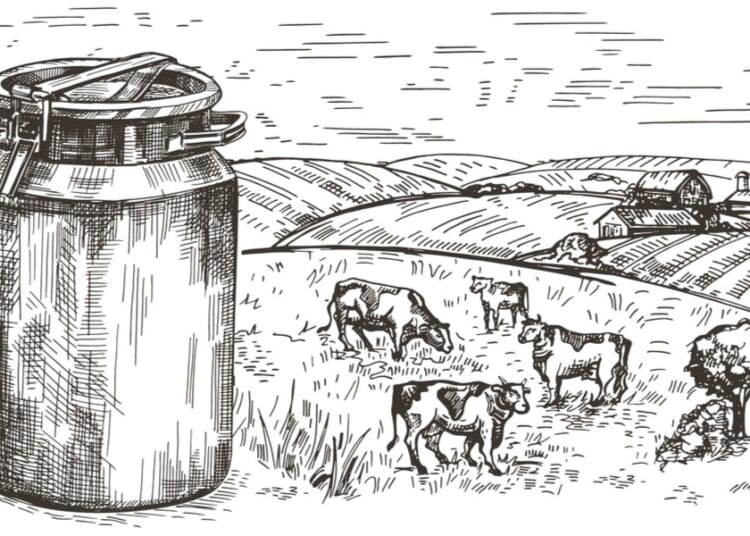On our return from the festive break, I am handing over the first item once more to DEREK REYNOLDS.
WHAT is it about sheds? My wife has a shed in our garden; it’s almost buried in ivy and clematis, and inside are the remains of charity shop window displays that she has created and is loath to discard, though shed life for papier-maché creations can be very limited due to damp. But she has an attraction to sheds, as have I.
Louise’s has stemmed from having chickens as a child, and when not ‘with chickens’, her dad’s chicken shed doubled as an Indian outpost, a space ship, a galleon, and a place to concoct witches’ brews from leaves and twigs, even lighting small fires in tin cans.
My own fond memories began when my father purchased a 3ft by 4ft ‘feather-board’ shed to put at the back of our ‘two up, two down’ in North London. I was four years of age, and it was 1951. Dad nailed an old pressed aluminium ‘GB’ plate, a horse-shoe and a metal rose which he had painted red to the front. At one point I had some guinea pigs in a hutch within, and a tortoise spent his winters hibernating in a cardboard box. The most lasting memory was of returning from a holiday in Southend and sitting inside painting a collection of seashells, listening to the rain pattering on the roof. It felt like a sanctuary, a little world of its own, the sound of rain most comforting.
This picture was taken in early 1970 after I passed out as a driver for London Country buses, which I wrote about here.

After I married in 1968, the shed was home to various folding chairs and some tools Dad would use when decorating. There it remained until the mid-1970s, when Mum and Dad were re-homed by the council into a ground floor flat in Potters Bar, where tenants were allocated small parcels of land to grow things in one central area. Here the shed found its new resting place, for a while. Dad passed away in 1977, and Mum in 1986. The shed was removed to my father-in-law’s back garden in St Albans where it met up with two other sheds: the former chicken shed beloved of my wife, and a larger shed with all manner of the clutter that sheds seem to attract. By this time Dad’s shed had been fitted with a small bench and vice (very useful).
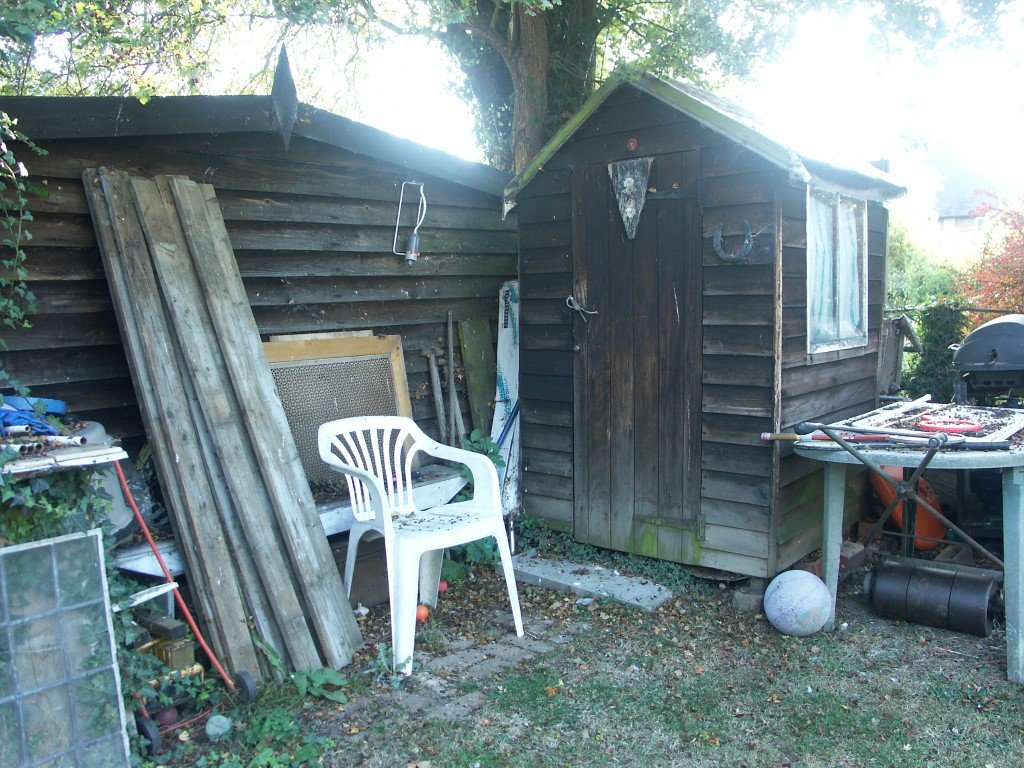
My own collection of bits and bobs, odd bits of motorbike and bicycles, had grown out of all proportion, and a decent shed was needed. A 12ft square shed was planned at the bottom of the garden at St Albans. Footings were dug, old iron and steel mesh laid, concrete poured and levelled. Our firstborn daughter (then aged 15) and I wrote our names and the year, 2002, in the concrete before it set. I imagine they are still there. But then my wife and I with our daughters moved to Scotland, so an impromptu construction was made on the base at St Albans: covered with heavy duty PVC, and my ‘treasures’ placed within, awaiting a future return, or collection, dependent on our fortunes or otherwise north of the border.
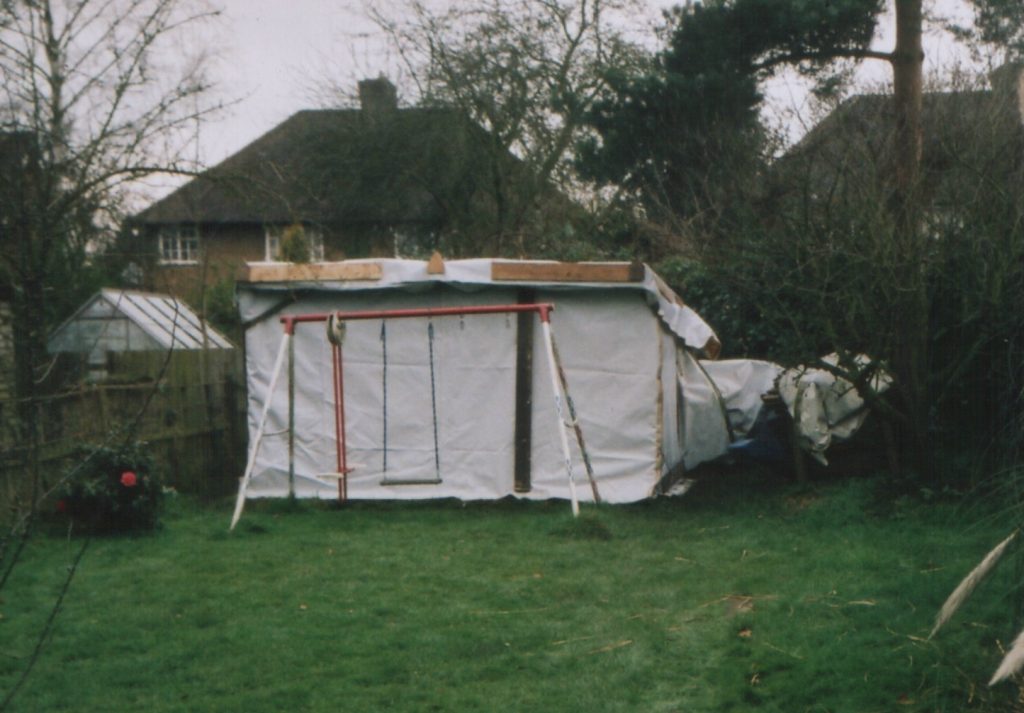
We lived for sixteen months in some stunningly beautiful scenery in Strathspey and Badenoch, where we rented a small bungalow in a steading known as ‘Easter Dalraddy’. Beside the bungalow was a shed. This was made of stout timber, slatted at one end, with a corrugated tin roof, some of which the wind had removed and scattered across adjacent fields. The wind whistled through the slats, and there was a door missing. When it snowed, everything inside got covered. The floor was bare earth. I made a door, stapled heavy-duty PVC within to keep the wind out, made a bench, and re-attached the recovered corrugated tin to the roof with stout nails, placing some hefty pieces of Scottish granite on top, as is the custom. This picture was taken when I was shattered after a day’s grass mowing.
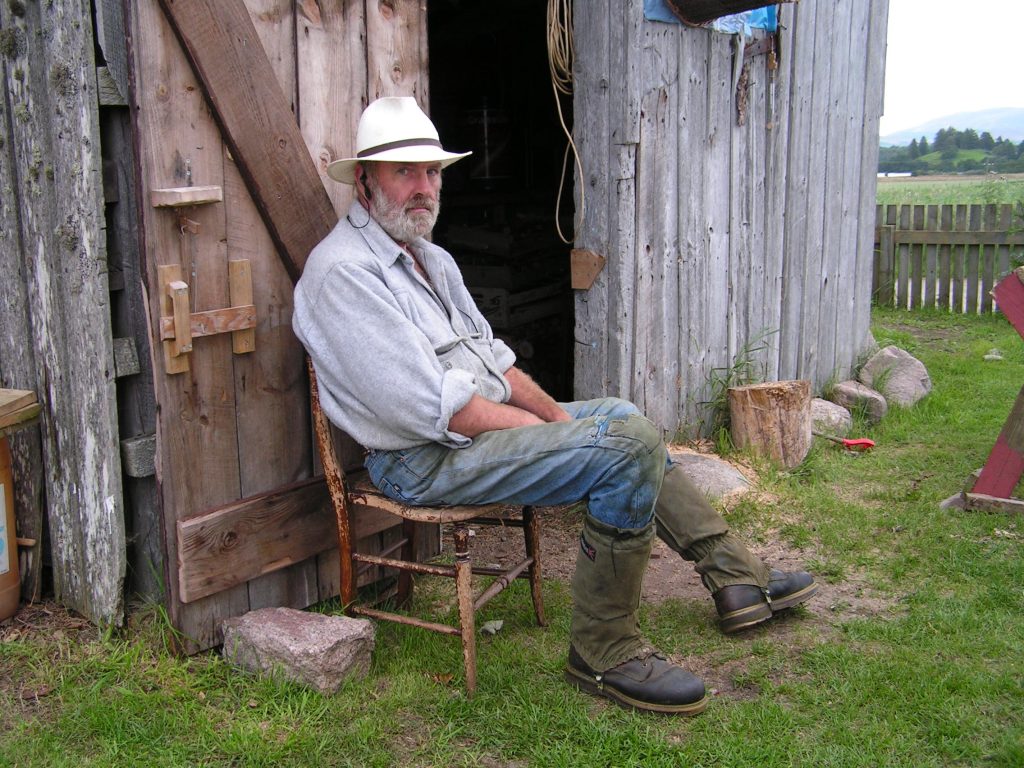
Scotland, as beautiful as it is, was not for us. Lack of work and the high cost of living saw us move back South, and another spell with the in-laws. The ‘super shed’ was back on the drawing board, and during 2005 it got built.
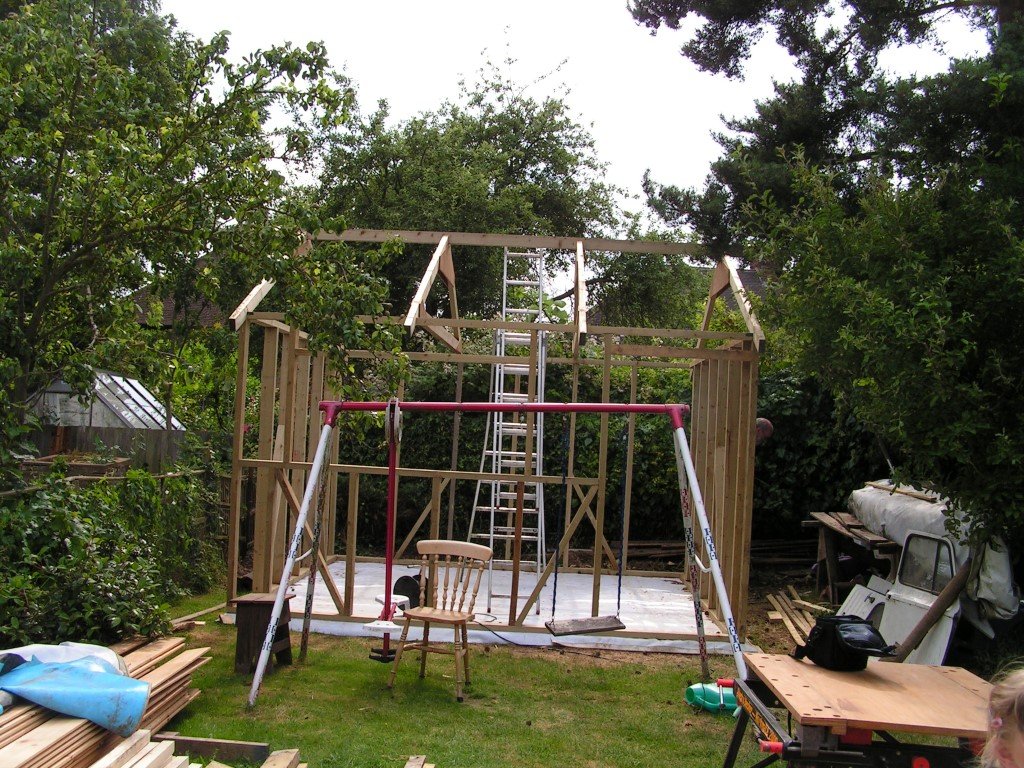
Frames from 2” x 4” studding; damp course beneath the floor; vapour barriers beneath the Oriental Straw Board lining and beneath the ship-lap cladding with four inches of insulation between. Double-glazed sliding window; sturdy bench, a solid fuel range salvaged from my mother-in-law’s outhouse in France installed, and a flue and chimney stack made. The range was set on slabs laid directly on the concrete base. Mahogany-faced three-quarter inch ply sheeting made up the rest of the flooring, set upon 2” x 2” timbers 12” apart, polystyrene infill. Total cost in materials: £1,000. This picture was taken when it was nearly finished: window to glaze; chimney to fit; door catch to make.
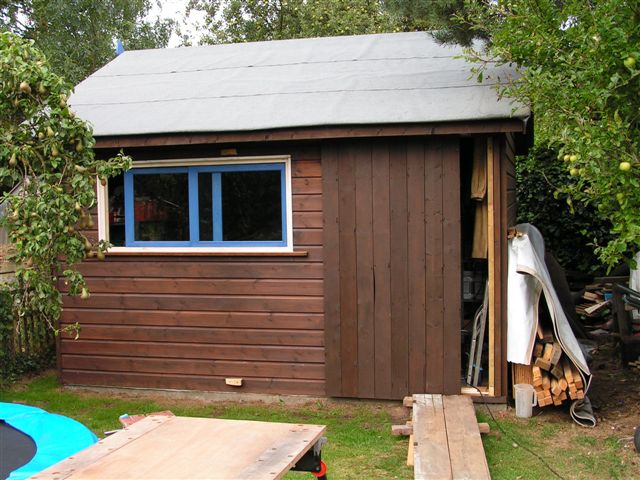
With the Pechenard stove lit, internal temperatures could reach 80°F, and snow would remain on the roof. I had my ‘super shed’! Within, I had a refuge. Shelving soon followed; furniture; lamps; clocks; pictures; a raised double bed.
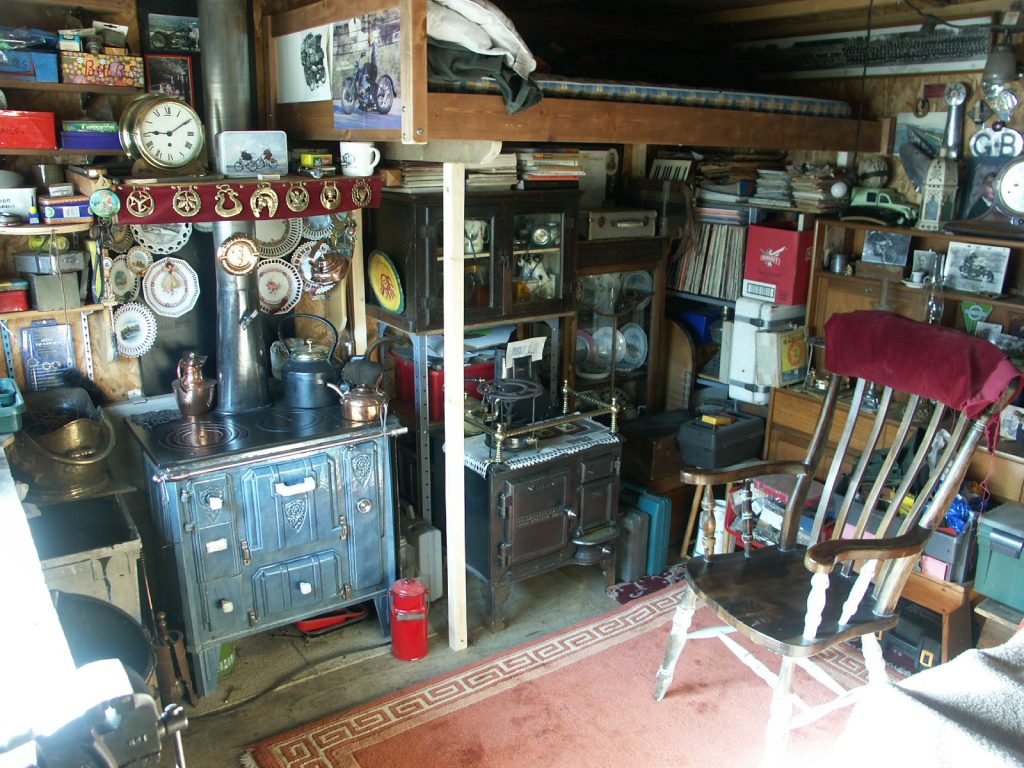
A place to fettle things, build things, read things. But ‘family’ and new neighbours created issues. There were flies in the soup.
In 2011, we moved to Shropshire. I think the ‘super shed’ remains to this day in St Albans. In Shropshire, we started again. And what came with us was my dad’s old shed from 1951. Our first home in Shropshire was a semi-detached with views over towards Wenlock, no shed in the small garden, but with an area that could be made suitable with some levelling. Dad’s shed was set up on some slabs temporarily. (Being so small, it was held together with only eight bolts to keep the sides and ends together, and two brackets to keep the roof on.)
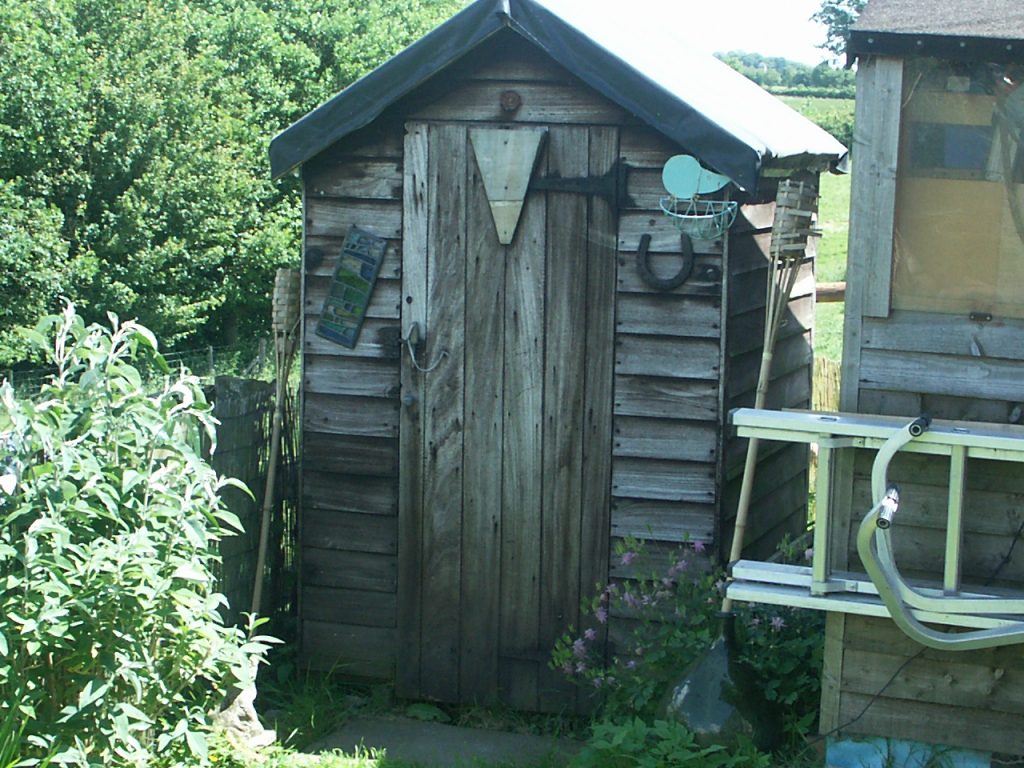
I also bought a build-it-yourself 8’ x 12’ feather-board shed. Once that was up, I lined it with sheets of bubble-wrap stapled on, with sheets of hardboard on top of that. Not as effective as the ‘super shed’, but with a paraffin heater it soon warmed up. Once again, table; bench; chair; vice and more shelving followed. And a fine view to boot!

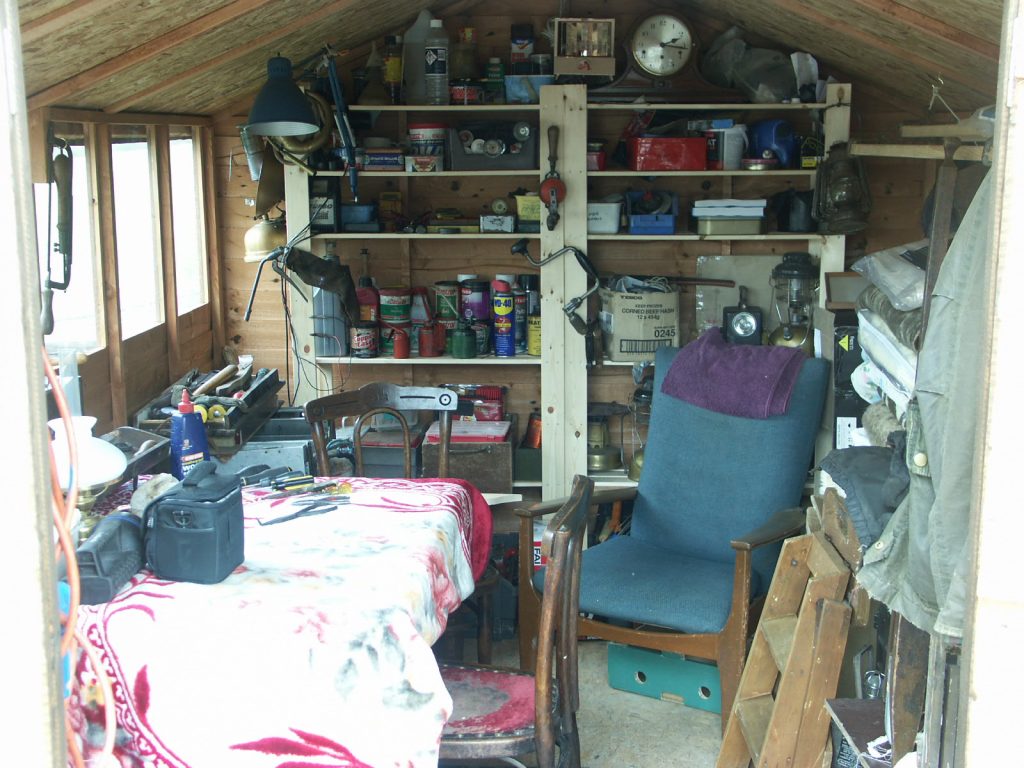
Around five years later, Lou happened to be in a queue at the bakers and was chatting to someone about manure for the garden. Another woman piped up with an offer of manure from her farm, and within two days she had turned up on a 1950s Ferguson 35 tractor, with a skip full of best mature cow dung! That started a relationship which involved us meeting other locals, and when we were asked to help clear out one of their tied cottages which previous tenants had made a mess of, we went willingly. This little house was part Georgian, part Victorian, part Edwardian, with a big garden and apple trees. It was gorgeous.
Cutting a long story short, we were offered tenancy and helped our farmer landlord clean, paint, and plaster much of the cottage prior to moving in just before Christmas 2017. There were sheds in the garden too! Three joined together originally from the nearby sanatorium, which housed TB patients in the 1920s when one accepted treatment was to be away from towns and at a high elevation for better air quality. We are around 650’ to 700’ above sea level, with views to Wenlock Edge and beyond. The sheds were run down, but strong (save one) and as a bonus I could have one of the farm barns for a workshop!
The barn in question was once used as a milking parlour, 45’ long by 10’ wide, 11’ high. Drawbacks are a tin roof, and a sloping concrete floor designed for washing out effluent. But it has swallowed almost all of my toot, and still room for drying wet horse coats.
And what of Dad’s 1951 shed? It now is the store shed for chicken and bird food. Still with a bench and a vice, and a few shelves. The only part of it that has been renewed (30 years ago) is the floor. Now it sports some flattened corrugated tin around its lower parts to stop the rats getting in. Still has the horse-shoe and the red rose. The GB plate has been revamped with a black background and polished aluminium letters – it is in the barn.
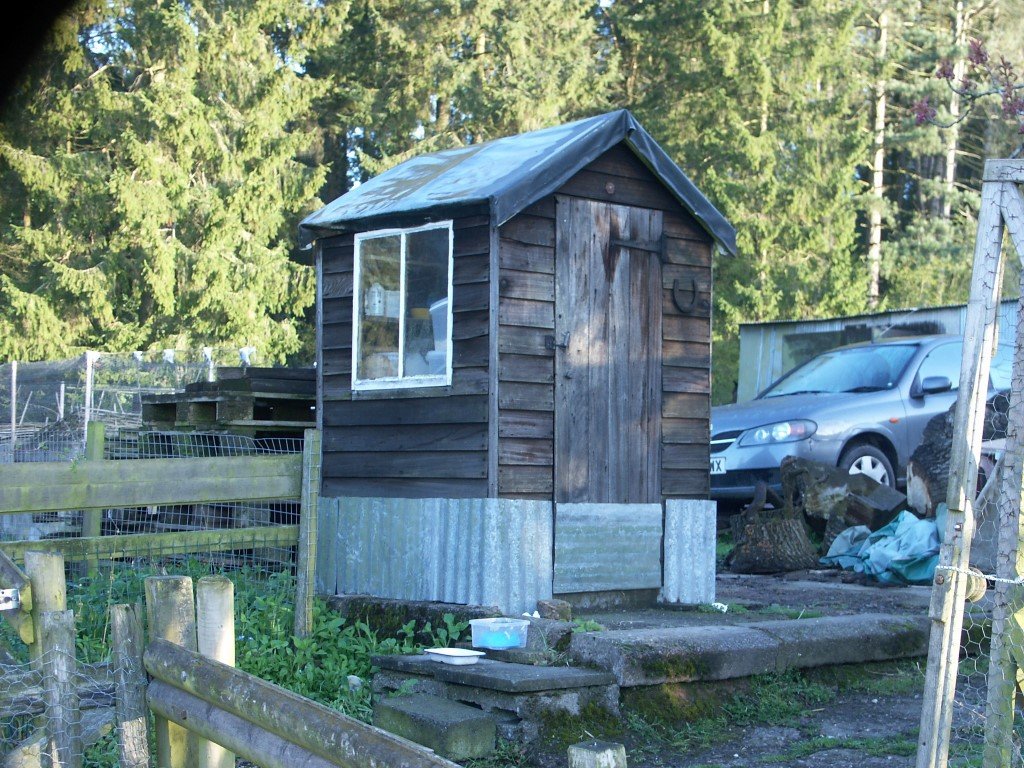
There is also a level space where a greenhouse once stood, 12’ x 14’. Another shed? Be still, my beating heart.
***
Sheep of the Week
Back to me: The Cameroon sheep is one of the oldest breeds in the world, and one of the rarest, with possibly only 1,000 left. It was domesticated for meat in West Africa, specifically Cameroon, as the name suggests.
Here is a group of ewes with (I presume) a young ram at the back.
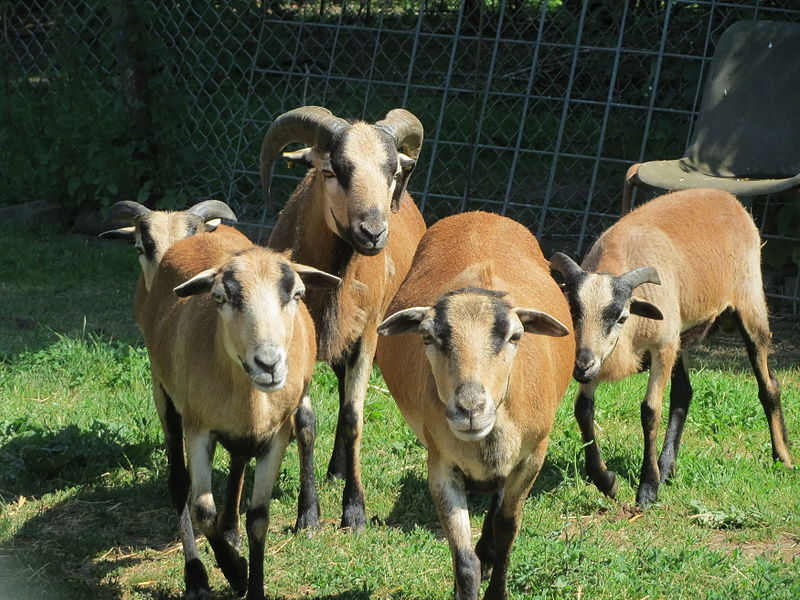
This is what a mature ram looks like.
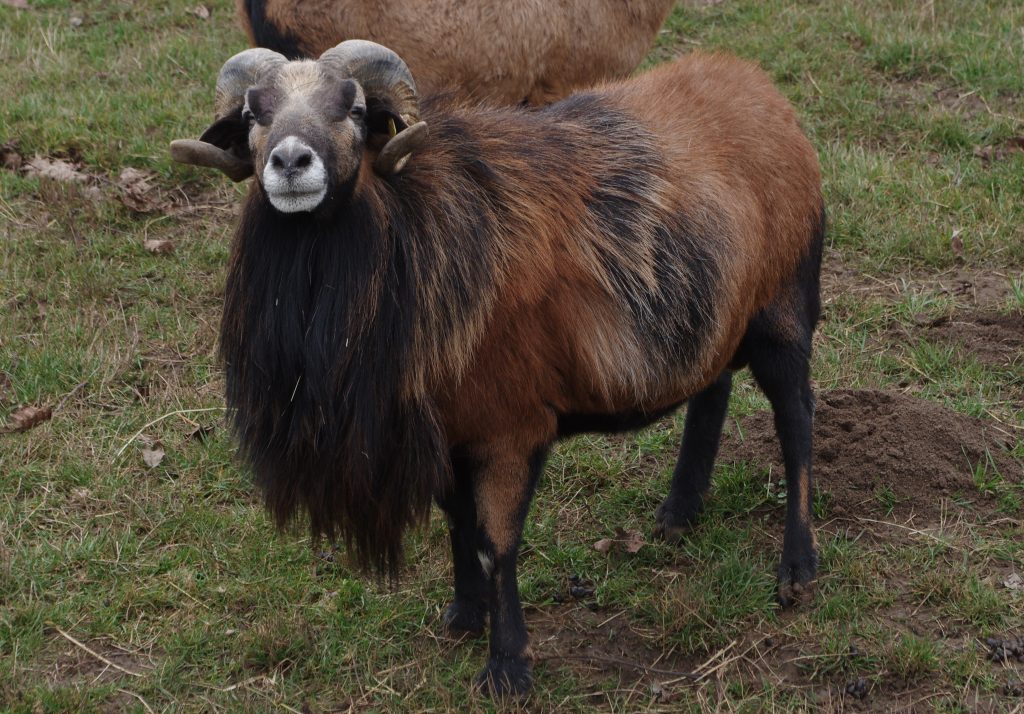
Females do not have horns, while rams have spiral horns, with a thick mane and throat ruff. They vary in colour but are usually brown with a black belly and legs and distinctive black face markings.
They are small sheep (sometimes known as the Cameroon Dwarf) and very hardy. They have a hair coat as opposed to wool, and grow a thick undercoat in the winter. This is shed naturally in the spring, so they never need shearing. Unlike wool sheep, they are not waterproof, so they need shelter from rain.
With a lot of handling they can become friendly and docile (but see the second video), and seem to be a favourite with zoos and farm/wildlife parks so much so that a fair proportion of the world stock must be in Britain. You can find them at the following (but please check before making a journey):
Peak Wildlife Park near Leek, Staffordshire
Banham Zoo, Norwich
Lake District Wildlife Park, Keswick, Cumbria
Monk Park Farm, near Thirsk, North Yorkshire
Jimmy’s Farm and Wildlife Park, Ipswich
Blair Drummond Safari and Adventure Park, near Stirling
I am not sure where this film is from – does any reader recognise the language?
And while I avoid BBC material whenever possible, I could not possibly resist this. It can’t have been staged – but it does raise the question of why there was a second camera person there.
Spare Wheels of the Week
I LEARNED to drive in the 1960s, and ever since then I have believed it was mandatory for a car to carry a spare wheel in case of a puncture. This is not the case, and our son found out the hard way why it should be when he had a blowout at 11pm on New Year’s Eve. The problem is that wheels are not all the same size. He drives a fairly old BMW and it took till 2am to locate a compatible tyre. It was a further hour and a half before it reached him, and then it had to be fitted. He arrived home at 5.30am, nearly £500 worse off. Looking it up, I find that a mere 3 per cent of new cars are sold with any kind of spare, either a full-size wheel or a lighter ‘space saver’. Instead they tend to be supplied with a repair kit which will not deal with any puncture much bigger than a pinprick. Apart from being a lot cheaper, this saves weight and improves fuel consumption a bit, but it must be the very definition of a false economy. Our son has now equipped himself with a spare. Our Skoda was supplied with one, so it is quite a rarity.
I can’t discover whether carrying a spare wheel ever was mandatory, as I believed – does any reader know?

